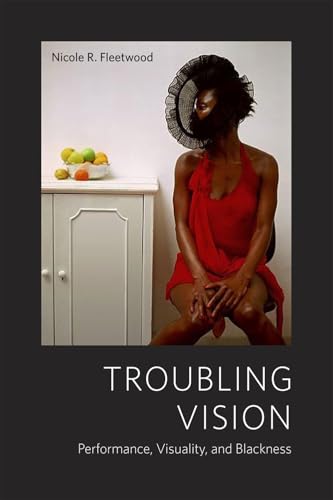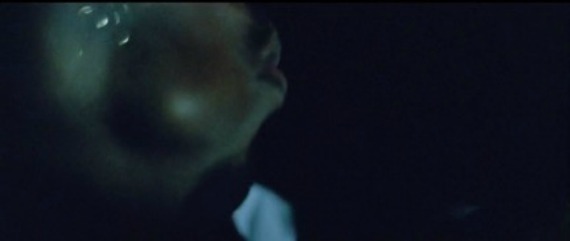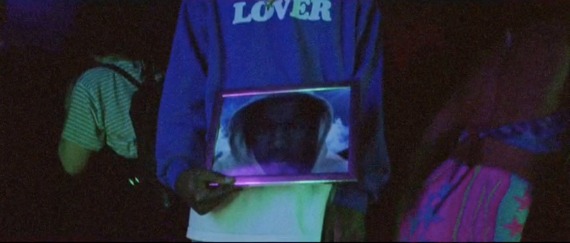R.I.P. Trayvon, that nigga look just like me
–Frank Ocean, “Nikes”That looks like a bad dude …
-A Tulsa police officer, on the body of Terence Crutcher
1.
I can’t stop thinking about the video footage shot from above the highway where Terence Crutcher died in Tulsa, Oklahoma. If you watch the footage, you’ll see the 40-year-old man walk away from officers with his hands up before Officer Betty Shelby shoots him dead. But what we see isn’t what echoes for me — it’s what we hear. If you listen you’ll hear one of two officers in the helicopter (one of whom was Officer David Shelby, husband to Betty Shelby) authorize Crutcher’s death moments before Crutcher crumples to the ground. Pronouncing, “That” — this is a human being he’s referring to — “looks like a bad dude,” he renders Crutcher a threat in the absence of any evidence outside his body.
These words echo for me because in the footage their effect approaches something like magic. The officer observes, and moments later Crutcher is dead. It’s too perfect — much too perfect — an illustration of how preconceptions about black people begin with the visual, with assumptions about our bodies: how we move through space, the way we cast our eyes at others, our affect, and on and on. It’s too perfect an illustration of how assumptions emanating from the visual field produce physical ramifications, how they structure and are structured by racist fictions about what our bodies mean.
2.
There are three covers for Frank Ocean’s latest album, Blonde, all of which present black men flinching from our vision into various anonymities. One shows us a man disappearing behind weed smoke’s dense haze; the second presents another man (perhaps Ocean himself) ensconced in a motorcycle helmet’s hermetic safety. The third interests me most: it depicts the crooner standing in front of spotless white tile. He’s shirtless, so that we get to peer in on his slender, muscular body, but his hair is dyed green in a Stroop-inspired taunt. He obscures his face with a bandaged hand, beneath which you can make out his furrowed brow, suggestive of a grimace or weeping. Meanwhile, his hand, upper body, and forehead are beaded with water or perspiration.
Of all Blonde’s covers, this one most recalls the album’s original title, Boys Don’t Cry. Ocean dropped that title upon the album’s release, but when I look at this image of him soaked and covering his grief like Masaccio’s Adam leaving the Garden, I can’t help but hear that former title’s echo. It draws our attention to the precarious relationship between the normative gender assumptions that shape our conceptions of masculinity, and the reality of emotional vulnerability that those notions elide. Ocean’s obscured visage bespeaks the tension between the image of the black male body — a cluster of signifiers to which so many meanings attach that we hardly see it at all — and the emotional intricacy underlying these ossified stereotypes.
Amidst another cycle of renewed attention to police violence against black bodies, I’ve come to think that Ocean’s cover suggests possibilities for more nuanced portrayals of black masculinity and emotion than those that currently pervade our national consciousness. Every death of a police-shooting victim underlines the state of hypervisibility in which the black body exists. For black men, this means that a certain fiction is always preceding our bodies, walking ahead of us into rooms, intimidating people on sidewalks, and speaking for us before we can open our mouths.
 As Nicole Fleetwood observes in Troubling Vision, this fiction imbues us “with a mythic sense of virility, danger, and physicality.” I take Fleetwood to mean that in America’s cultural imagination, the black male body always signifies as an existential threat, one characterized by predatory violence, hyper-sexuality, and overwhelming physical force. This will be true no matter what we do to attenuate the nervous unease that crowds us. We’re always already hollowed out, reduced to receptacles in which the nation’s most basic fears circulate.
As Nicole Fleetwood observes in Troubling Vision, this fiction imbues us “with a mythic sense of virility, danger, and physicality.” I take Fleetwood to mean that in America’s cultural imagination, the black male body always signifies as an existential threat, one characterized by predatory violence, hyper-sexuality, and overwhelming physical force. This will be true no matter what we do to attenuate the nervous unease that crowds us. We’re always already hollowed out, reduced to receptacles in which the nation’s most basic fears circulate.
Blonde’s cover short-circuits these assumptions, creates a tear in the visual field that unsettles received notions that black masculinity is legible, easy reading for whoever might chance upon it. Consider his green hair: it employs the Stroop effect to taunt us via a textual-visual misdirect so that seeing and reading are sundered from one another. (In another slight at legibility, the album title is stylized as “blond” on the cover, though the official title is Blonde.) Ocean’s hair reshuffles our expectations before we hear a note of music, demanding that we dedicate renewed attention to an image we thought we knew. It’s an emphatic reassertion, a warning that with Ocean, what you see will not be what you get.

 Then there’s that hand, raised to hide an emotional turmoil that, according to the script, shouldn’t exist at all. In We Real Cool: Black Men and Masculinity, bell hooks writes that in order to compensate for the structural violence wielded against them, black men are taught “to believe that a real male is fearless, insensitive, egocentric, and invulnerable” and thus adopt a “cool pose” (emphasis mine). This is a masculinist posture that rejects emotional vulnerability — and interiority in general — as inimical to manhood. Hip-hop’s visual codes and genre conventions often reinforce this posture, with the effect of embracing and heightening the fictions foisted upon us by white supremacy’s image repertoire. In Hip-Hop Wars, Tricia Rose argues that contemporary rap’s calling cards have become “distorted, antisocial, self-destructive, and violent portrayals of black masculinity” along with rampant misogyny and homophobia. The cool pose instantiates the representational straitjacket against which black men struggle.
Then there’s that hand, raised to hide an emotional turmoil that, according to the script, shouldn’t exist at all. In We Real Cool: Black Men and Masculinity, bell hooks writes that in order to compensate for the structural violence wielded against them, black men are taught “to believe that a real male is fearless, insensitive, egocentric, and invulnerable” and thus adopt a “cool pose” (emphasis mine). This is a masculinist posture that rejects emotional vulnerability — and interiority in general — as inimical to manhood. Hip-hop’s visual codes and genre conventions often reinforce this posture, with the effect of embracing and heightening the fictions foisted upon us by white supremacy’s image repertoire. In Hip-Hop Wars, Tricia Rose argues that contemporary rap’s calling cards have become “distorted, antisocial, self-destructive, and violent portrayals of black masculinity” along with rampant misogyny and homophobia. The cool pose instantiates the representational straitjacket against which black men struggle.
I’m not certain that I can accept hooks and Rose’s assertions uncritically, but that’s for another essay. But if we receive them as true, Ocean’s cover flouts the cool pose in favor of emotional vulnerability, insisting on depth in the face of a dyad that reduces black men to surface. Ocean’s damaged hand is raised in an attempt to enact the earlier album title’s dictum — boys don’t cry, remember? — but it’s a futile act; the gesture only displaces his grief so that his tears reappear in the visual field as the moisture beading his body, each tear a tear in his cool pose. Here, feeling and vulnerability are irreducible no matter what pose we might strike in order to hide it. Call it a new law: the Conservation of Feeling. This hand also blocks us, creates an opacity to stump a presumed transparency. The overall effect is a reinsertion of interiority into a body that had been hollowed.
3.
How does this sound?
On Blonde, what we hear is a struggle between the masculinist conventions of contemporary hip-hop and Ocean’s assertion of a queered black masculinity, two images of black manhood jockeying for position in one aural space. It’s a drama not unlike the one Ocean presents on the album cover, and if you listen you’ll hear the tears in hip-hop’s cool pose. Take the first track on the album, “Nikes”:
These bitches want Nikes
They looking for a check
Tell ‘em it ain’t likely
Said she need a ring like Carmelo
Must be on that white like Othello
Ocean cycles through some of contemporary hip-hop’s most enduring tropes with impressive dexterity: he plays a vigilantly unattached bachelor weary of commitment and manipulative women, works in references to cocaine and sneakers, and name checks an NBA star. It’s a masterful display of Ocean’s facility with the genre’s conventions after a four-year absence, and like most good hip-hop these days, the verse is deeply boring but also hilarious in the way that Ocean breathes life into tired tropes via inspired wordplay. (Will there be a better couplet written this year than “Said she need a ring like Carmelo/Must be on that white like Othello”? Probably not.) The verse also initiates the album in a moment of dissonance: after seeing Ocean embrace queerness not just as an identity but also as a political orientation, it is jarring to hear him turn to the cool pose’s rhetoric.
But this rhetoric’s cool surface has a conspicuous tear in its fabric. After all, Ocean sings the song’s first three minutes through a distorted filter, sounding as if he inhaled helium before running his vocals through autotune. At times he howls and whoops rather than sings, and if we didn’t know who the singer was, it would be impossible to assign Ocean a gender. Reverb doubles his voice, heightening its alien quality. A lone, woozy synth that approximates a Theremin runs the song’s length; behind the synth, constant vibrato makes the song’s bass line sound weirdly distended. It sounds like we’ve been stranded in some unfamiliar space. The queer quality of this defamiliarization becomes apparent in the song’s video, which features shots of Ocean sporting eyeliner, suggestively palming a gearshift, and pantomiming fellatio.
Later, he stands alone on a stage, garbed in a white jumpsuit, eyes closed in private reverie, glitter sprinkled upon his face.
Ocean shows us a queer black male body, conspicuous in its refusal to be forced into the kind of hypervisibility that allowed police officers to condemn Terence Crutcher as a “bad dude” on sight. The effect is a defamiliarization of those familiar tropes associated with a toxic masculinity.
This is why I find the beginning of “Nikes” ’ second verse so compelling. Leaving behind the cool pose, Ocean mourns for some fallen black men: A$AP Yams, the New York producer who passed away earlier this year; Pimp C, the Texas rapper whose ghost has haunted hip-hop this year; and Trayvon Martin. When I first heard Trayvon’s name mentioned in company of Yams and Pimp C, I was confused. What did he have to do with these two artists who performed a certain vision of the black male body?
But now I see that including Trayvon in that pantheon constitutes a refusal and an expansion: black masculinity can look like Yams and Pimp C, yes. It can also look like the face of this boy, whose body was read as thuggish and dangerous for no other reason than his blackness. By inserting Trayvon Martin into this list, Ocean asserts the elasticity of black maleness. If Trayvon looks like Ocean, then he also embodies the alterity Ocean foregrounds in this song and video, the possibility of “otherwise,” as Ashon Crawley might say. When that lyric arrives in the video, Ocean holds the ubiquitous self-portrait of Trayvon staring out from beneath a white hood. This image circulated relentlessly in the aftermath of his murder, and public as it has become, we might be tempted into thinking that we know it. Ocean demands that we look again.









